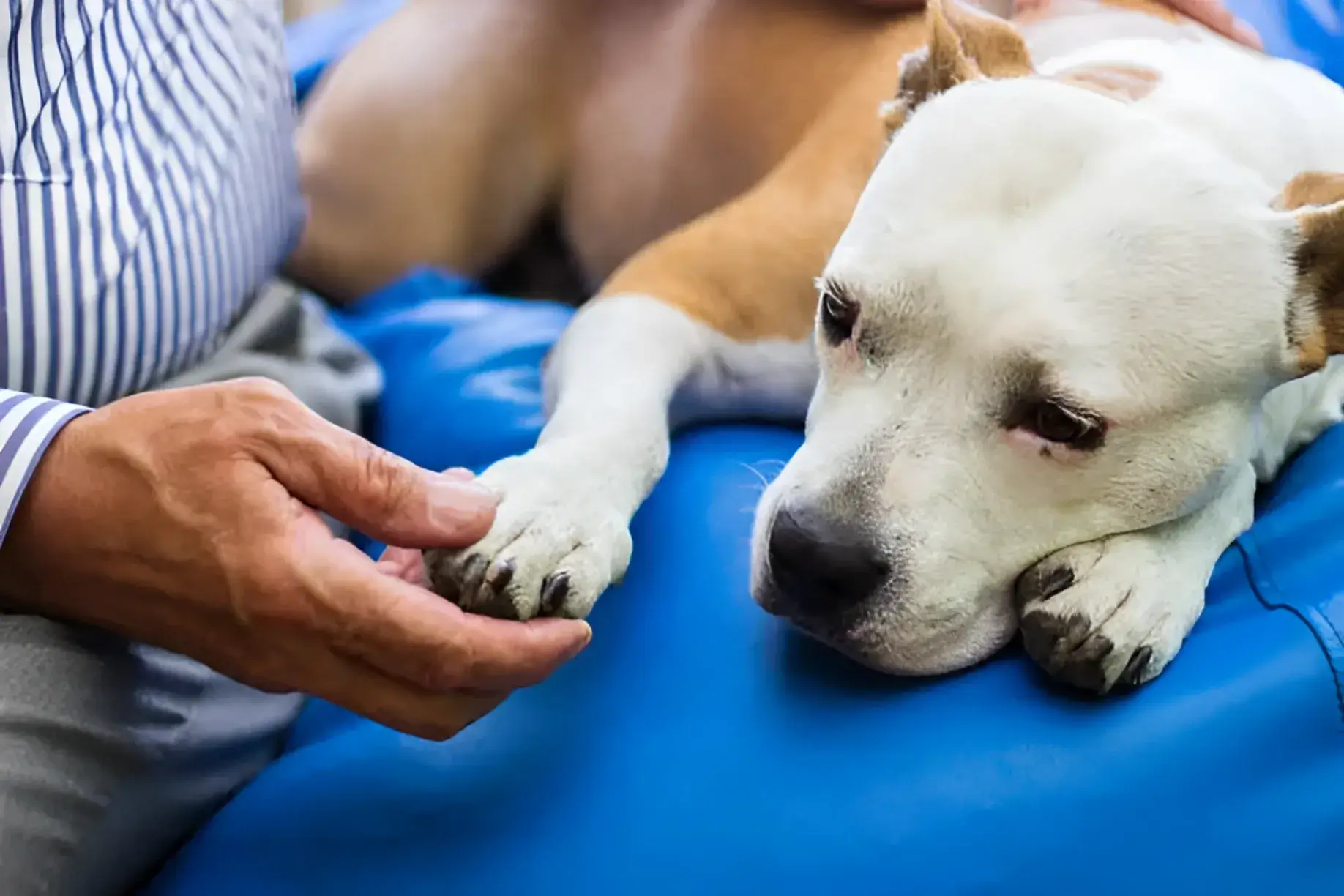Does your dog seem hesitant to walk on sidewalks or other hard surfaces? Does their gait seem altered, or are they limping? Painful corn on their paw pad might be the reason. These hard, callus-like formations are made of excess keratin buildup and are especially common in sighthounds like Greyhounds. Let’s delve into why corns occur, how to spot them, treatment options, and how to keep them from returning.
Understanding Corns on Dog Paw Pads
What are corns? Corns, also known as keratomas, are hard, cone-shaped growths that form on a dog’s paw pads. They’re made up of excess keratin and usually appear under the central paw pads, particularly the middle toes.
Why are sighthounds more at risk? Sighthounds like Greyhounds have specific anatomy that makes them susceptible to corns:
- Narrow paws and thin padding: Their paw construction offers less cushioning for the bones.
- High-impact running: The force of running on hard surfaces creates repetitive trauma to their paws.
Causes of Corns
The primary cause of paw pad corns is repetitive pressure and friction. Additional factors may include:
- Scarring: A healed injury can lead to scar tissue buildup, forming a corn.
- Foreign bodies: A small object lodged in the pad can trigger corn development.
- Underlying health conditions: In rare cases, corns can be related to autoimmune diseases or zinc deficiencies.
Symptoms of Corns on Dog Paw Pads
Changes in Walking: Your dog may limp, walk delicately, or completely avoid putting weight on the affected paw.
Preference for Softer Surfaces: You might notice your dog seeking out grassy or carpeted areas instead of hard floors and pavements.
Thickened Paw Pad: Look for a hard, raised bump on the paw pad. Corns are often circular in shape.
Pain Sensitivity: If you gently press on the corn, your dog will likely exhibit signs of discomfort.
Untrimmed Nails on Affected Paw: When walking hurts, nails don’t get naturally worn down, leading to overgrowth on the paw with the corn.
Diagnosis by a Veterinarian
Your veterinarian will examine your dog’s paw and may take a biopsy to rule out other conditions. They’ll look for the characteristic features of a corn and assess your dog’s gait to identify any secondary causes of lameness.
Treatment Options
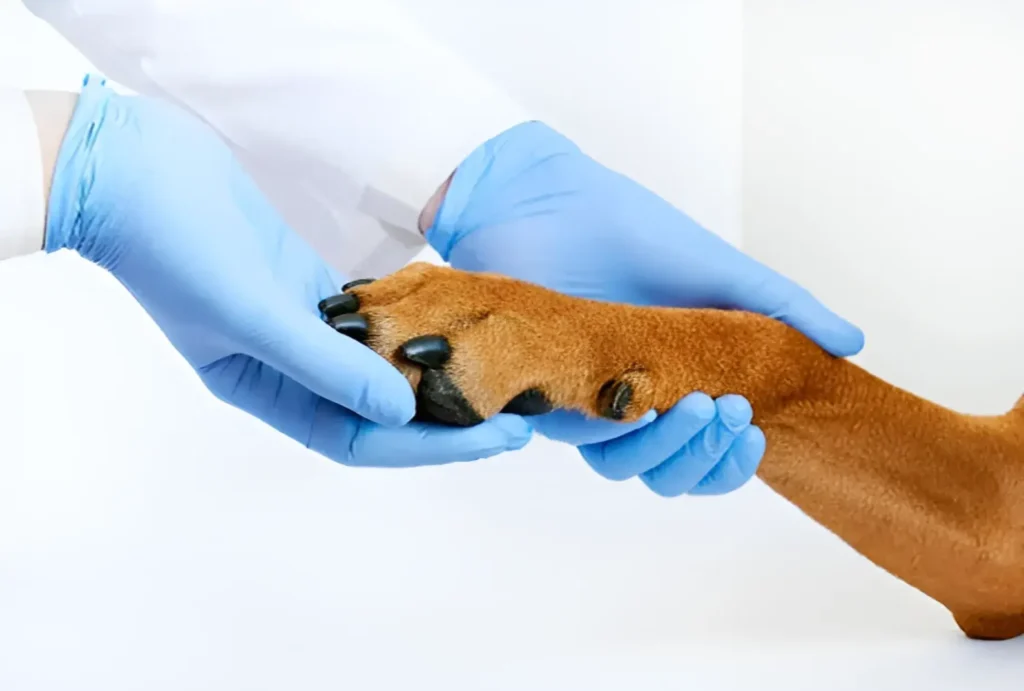
Surgical Removal: This is the most common and often the most effective treatment. The corn is carefully removed under sedation or anesthesia.
Topical Treatments: Keratolytics (agents that soften keratin) and emollients can help manage corns, but they may not completely resolve them.
Padding and Boots: Special dog boots or bandages offer cushioning and protect the paw during healing.
Supplements: Vitamin A may help regulate skin cell growth, aiding in recovery.
Alternative therapies: Some veterinarians explore silicone injections or experimental treatments, however, their effectiveness is still being evaluated.
Owner Tips & Tricks: Home Care for Corns
While veterinary care is crucial, here are some home care tips to support your dog’s recovery and prevent further irritation:
Epsom salt soaks (with vet approval): Mix one tablespoon of Epsom salts per gallon of warm water. Soak your dog’s paw for 5-10 minutes, two to three times a day. This can help soften the corn and reduce inflammation (consult your veterinarian for specific instructions and duration).
Protective footwear: Invest in well-fitting dog boots designed for paw protection. Boots will cushion the paw and prevent further friction during walks. Choose boots with breathable materials and a secure fit.
Observe for signs of infection: Redness, swelling, or pus around the corn could indicate infection. In such cases, seek immediate veterinary attention.
Long-Term Management: Living with Corns
Even with successful treatment, corns can recur. Here’s how to manage your dog’s long-term paw health:
Regular paw checks: Inspect your dog’s paws weekly for signs of new corns or any abnormalities. Early detection allows for prompt intervention and potentially prevents the need for extensive treatment.
Lifestyle adjustments: If your dog is prone to corns, consider modifying their exercise routine. Opt for softer surfaces like dirt paths or grassy fields. Limit running on hard surfaces, especially concrete or asphalt.
Collaboration with your veterinarian: Discuss a long-term management plan with your vet. This might involve regular filing of the corn (performed by a vet), ongoing use of protective boots, or exploring supplements specifically formulated to support skin health.
Visual Aids: What Do Corns Look Like?
Photo 1
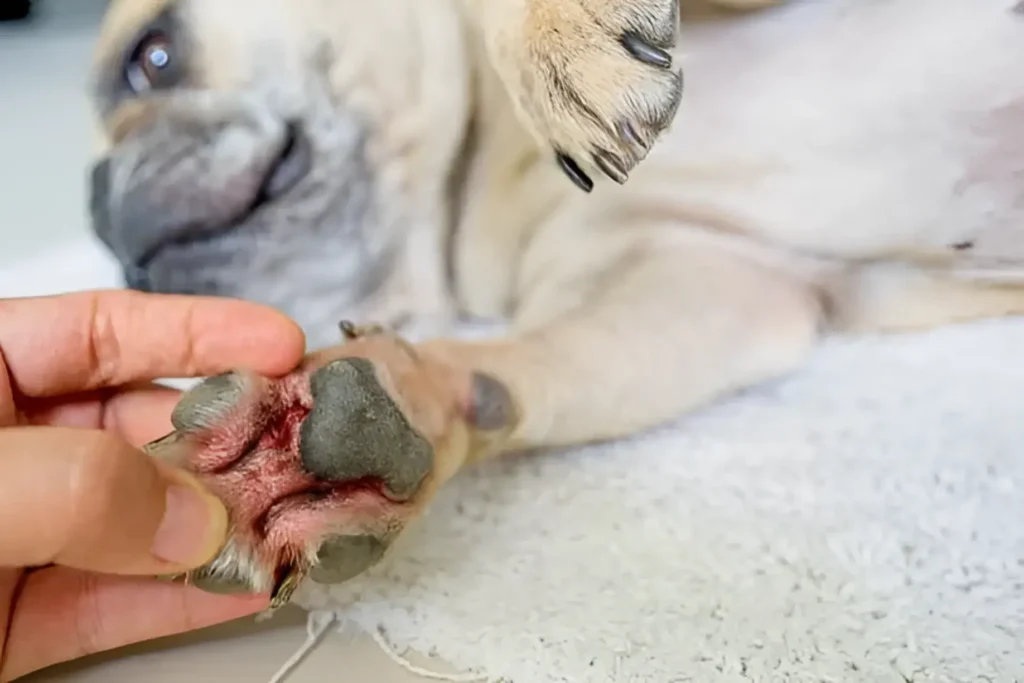
Close-up of an early-stage corn (small, circular, slightly raised area on the paw pad)
Photo 2
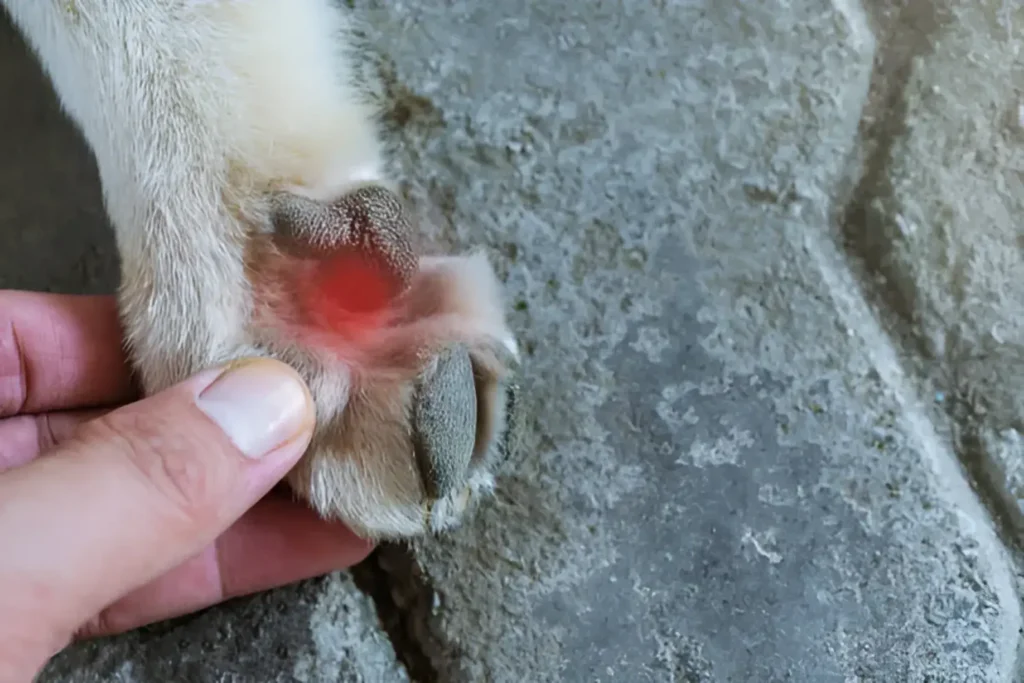
Moderate corn on a Greyhound paw (larger, more defined growth)
Photo 3
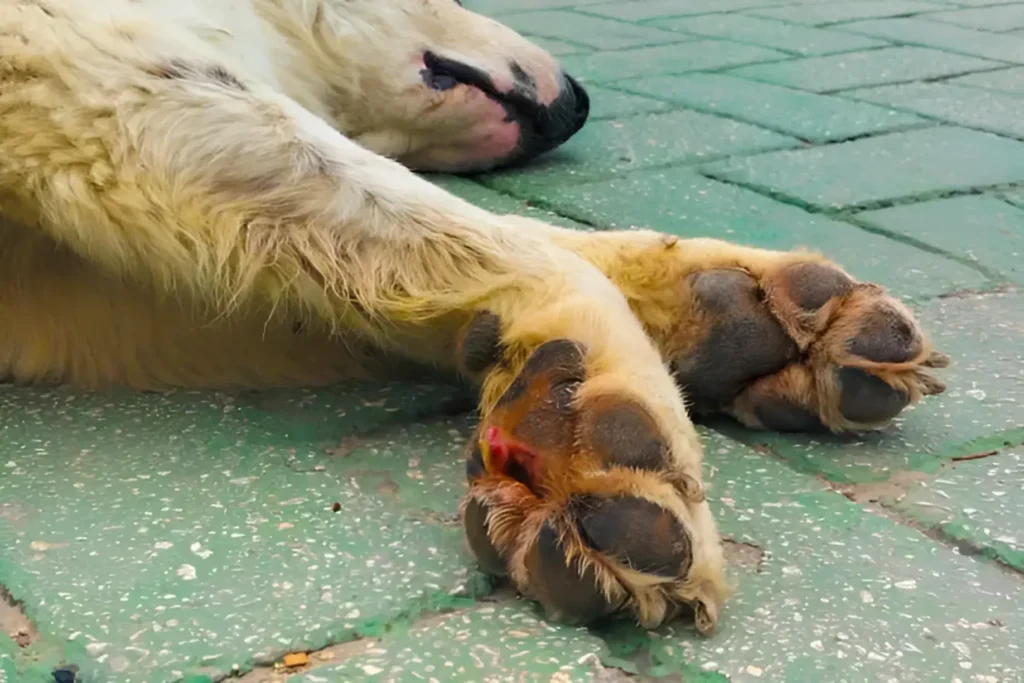
Severe corn (protruding significantly, possibly with signs of inflammation around it)
Conclusion
Corns on paws can be a painful and recurring issue for dogs. Understanding the causes, recognizing the symptoms, and seeking appropriate treatment are critical to keeping your furry friend comfortable. By protecting their paws and managing any underlying issues, you can help your dog live a happy and pain-free life.
The photo featured below the post headline is Credit: sanjagrujic/istockphoto
I hope you find this post helpful and informative. If Yes’ feel free to share it with your friends!
Frequently Asked Question
My dog had a corn surgically removed, but it grew back. Why?
Unfortunately, corn recurrence is common. The underlying cause – usually repetitive pressure on the paw – needs to be addressed for long-term success. Work with your vet to explore solutions like changing exercise surfaces, protective boots, or even potential orthopedic interventions in certain cases.
Are there breeds other than Greyhounds that get corns?
While Greyhounds are most affected, other sighthounds like whippets and mixes, and even some non-sighthound breeds can develop corns. Any dog with a history of paw injuries or particularly thin paw pads could be at risk.
Can I prevent my dog from ever getting corns?
Prevention is harder than treatment, especially for dogs who naturally experience a lot of paw pressure. Being proactive helps: protect paws with boots on hard surfaces, inspect for any injuries, and monitor for early signs of a developing corn.
Are corns on paws cancerous?
No, corns are benign growths, but they can be very painful and impact your dog’s quality of life.
Can corns heal on their own?
It’s unlikely. Prompt veterinary attention is important for proper diagnosis and treatment.
My dog has a corn. Can I try to remove it myself?
No! Please consult your veterinarian for safe and effective treatment. Do not attempt to cut or remove a corn on your own.
What is the difference between a corn and a callus on a dog’s paw?
Both corns and calluses are due to excess keratin buildup. Corns are well-defined, cone-shaped growths, often deeply embedded in the paw pad and painful. Calluses are flatter, broader areas of thickened skin, while uncomfortable, usually less painful than corns.
Do dog corns go away on their own?
It’s highly unlikely that corns will fully resolve without veterinary intervention. They tend to worsen if left untreated, leading to pain and potential infection.
What is hyperkeratosis corn on dogs’ paw pads?
Hyperkeratosis is the medical term for excessive keratin production. A hyperkeratosis corn is simply another name for a corn on a dog’s paw.
Can corns cause infection in a dog’s paw?
Yes, if left untreated, corns can crack or open, creating an entry point for bacteria. This can lead to a painful paw pad infection.
Are there home remedies I can try for my dog’s corns?
While some home remedies like Epsom salt soaks might provide temporary relief, it’s essential to consult your veterinarian. They’ll determine if it is truly a corn and recommend the most appropriate treatment.
How can I tell if my dog’s corn is infected?
Infection is a concern with corns. Watch for these signs:
Redness & Swelling: The area around the corn looks inflamed.
Discharge: There may be pus or other fluid around the corn.
Unpleasant Odor: An infected corn may have a foul smell.
Excessive Licking or Sensitivity: Your dog might lick the affected paw more than usual or react strongly to touch.
My dog is limping. Could they have a corn?
Yes, corns are a common cause of limping in dogs, especially in sighthound breeds. Have your veterinarian examine your dog’s paws to determine the cause of the lameness.
Can dog boots help prevent corn recurrence?
Absolutely! Boots protect paw pads from pressure and friction, reducing the risk of corns developing or returning after treatment.

